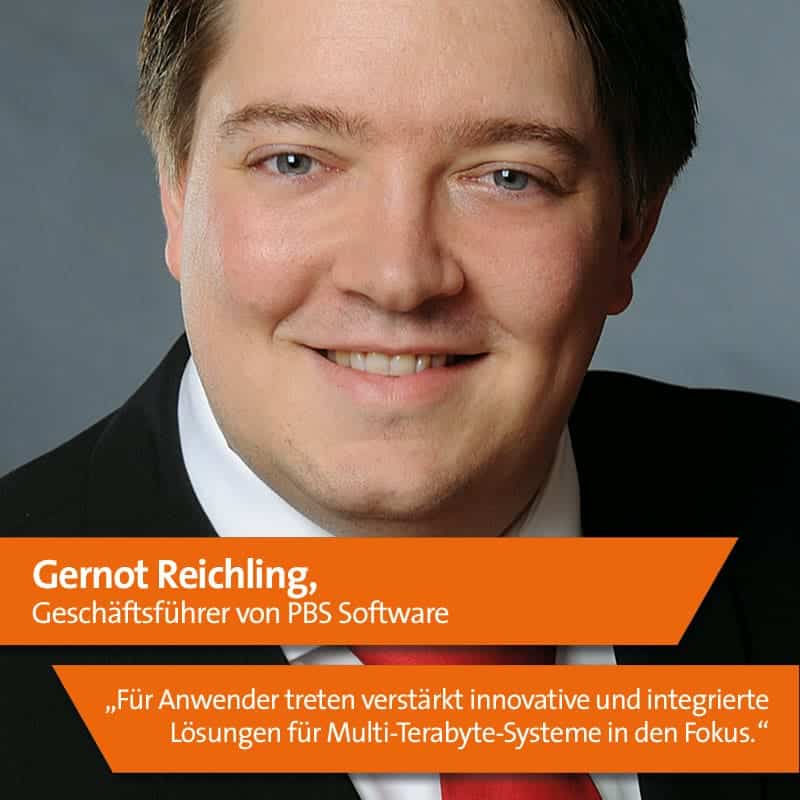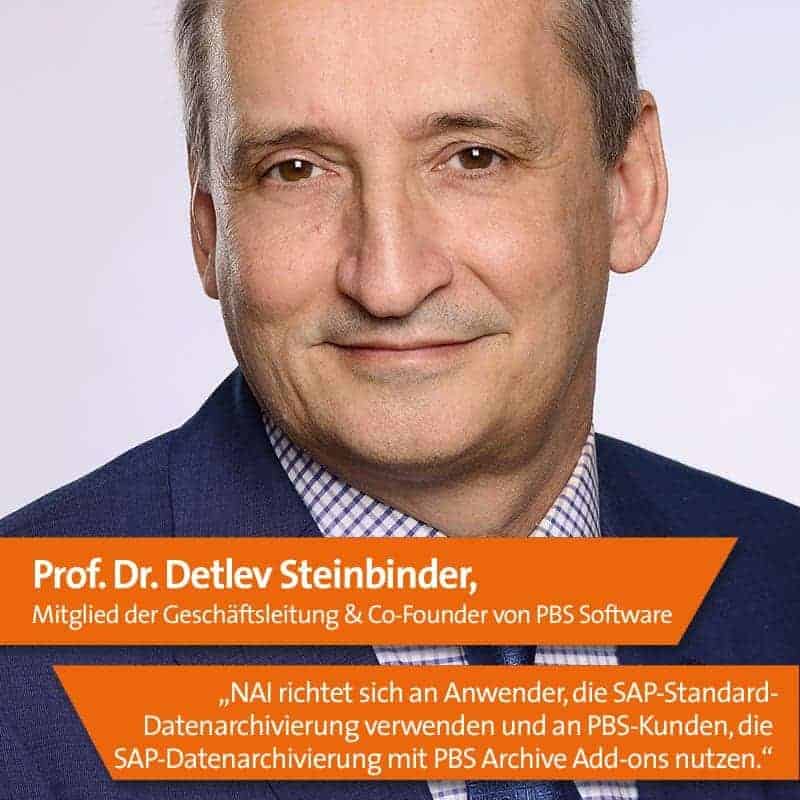Nearline analytics gains ground


Constantly increasing data volumes combined with growing regulatory requirements are challenges that SAP users have to deal with.
Furthermore, the costs for data storage are rising, and at the same time database sizes are increasing significantly. The same applies to the proportion of archived data, including the runtimes for data archiving. This is the view of the software company and SAP partner PBS.
In many applications, timely and integrated access to archived data is becoming a kind of standard procedure. For example, at an international corporation, up to 500 million documents from SAP Profit Center Accounting alone have to be archived every month.
"As a result, users are increasingly focusing on innovative and integrated solutions for multi-terabyte systems in order to adequately meet the diverse operational and regulatory requirements"
explained Gernot Reichling, Managing Director of PBS Software, during this year's recently held Info Day of the Bensheim-based company, which specializes in SAP add-on solutions.
For some time now, this has included a solution that, according to the company, is based on an innovative concept called PBS Nearline Analytic Infrastructure.
As Professor Detlev Steinbinder, also a member of the PBS management team, explained,
"PBS Nearline Analytic Infrastructure is aimed at both users who use SAP standard data archiving and PBS customers who use SAP data archiving in combination with PBS Archive Add-ons."
Complement to operational SAP systems
According to the company, PBS NAI was developed as a complementary solution for operational SAP systems such as ERP, industry solutions, CRM, and other SAP products.
The essence of this is that a column-based analysis technology is used, which was previously primarily used in data warehouse environments and which can be used directly in operational SAP systems for processing application data.
Specifically, the column-based databases SAP IQ (formerly Sybase IQ) or IBM DB2 Blu are used. From the PBS point of view, they offer high data compression of up to 90 percent and more on the one hand.
On the other hand, they have an extremely high performance for database queries in connection with mass data. Basically, a nearline solution receives the data for use from an SAP system with a time delay, depending on the individual circumstances and requirements. SAP has been using and offering nearline for years in the field of BW, but not in the ERP environment.
Benefits in a bundle, savings included
Another advantage of the NAI solution mentioned by PBS is that it can be operated and administered directly from the familiar SAP environment. At the same time, it offers an extension for the SAP Archive Information System (SAP AS) and includes its own tool for data transfer from SAP archives, SAP databases or for external data sources.
In addition: a DART viewer as another component of the solution to evaluate data extracts generated with the SAP Data Retention Tool. As well as: an ad-hoc reporting tool for operational SAP application data.
When asked about the benefits of PBS Nearline Analytic Infrastructure, PBS Managing Director Reichling said: On the one hand, a multiple of the data volumes in data archives can be processed.
Archives could also be indexed much faster. For example, around 50 million line items from an SAP profit center invoice could be indexed in just under 30 minutes using parallel processing.
erner, access to archived line items is accelerated by factors; operational reporting also gains massive momentum. In addition, it is possible to create ad hoc reports from an SAP system easily and flexibly.
On the other hand, according to the information, the volume of the SAP database can be minimized, which offers a monetary advantage. It is thus possible to demonstrably reduce the operating costs of SAP systems - in addition to significantly reducing the database server load.
According to the company, PBS Nearline Analytic Infrastructure supports the classic PBS Archive Add-ons. Accordingly, archived documents from Profit Center Accounting or other application modules can be indexed via PBS Nearline Analytic Infrastructure.
According to the information provided, archived documents can be accessed with the help of corresponding NAI-compatible PBS Archive Add-ons. All PBS products (NAI, Archive Add-ons, ContentLink, OA4ERP, Enterprise Content Store) will also be made available for S/4 Hana, according to company information.
Rewe relies on PBS NAI
At this year's PBS Info Day, the retail giant Rewe reported on its experiences with the Nearline Analytic Infrastructure from the Bensheim-based software company.
As Rüdiger Sinkel from Rewe Group's functional area management Central Accounting Coordination explained, the focus was on two topic areas or business scenarios: first, the analytical ad hoc evaluation of current and historical SAP ERP (FI) application data.
And secondly, audit-proof archiving and retrieval of cash register receipts, market and stock accounting data (non-SAP). In a nutshell, the internationally active retail group benefits from PSB NAI across the board. More. "Without it, various important operational analyses or searches from a productive ERP system would not even be possible," it said.
Without media breaks
For example, the following advantages were highlighted: no media discontinuity, but research in SAP (web browser optional); document research and FI analyses in a business context; process-related document analysis (payment notifications, interest/dunning runs) or no training effort for FI end users.
PBS NAI is used at Rewe on a four-socket server with 20 cores (Intel Xeon CPU E7 with 512 GB RAM) with SAP IQ (Release 15.4). In the "cash register receipts" business scenario, no less than around 5000 Rewe stores with more than 25,000 active cash registers are taken into account, which means billions of cash register receipts on the bottom line. In the "analytical FI ad-hoc evaluations" business case, the volume is around 6.3 billion FI posting lines.






